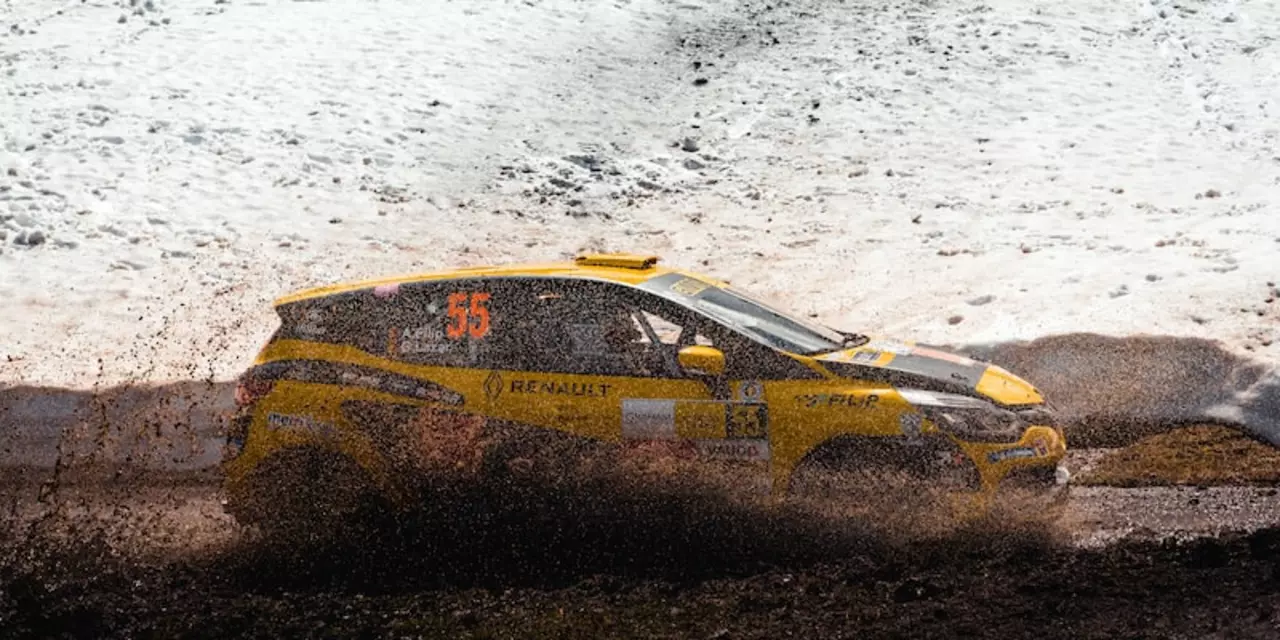Why do rally cars mostly sound the same?

An iconic sound of the racing world is the sound of rally cars. Whether you're a fan of the sport or not, you've likely heard the distinctive sound of revving engines before. But why do rally cars all sound so similar?
To answer this question, we have to look at the science behind the sound of rally cars. The sound of a rally car is created by the exhaust system. The exhaust system is designed to produce a specific sound, and this sound is a result of the size and shape of the exhaust pipes and the type of engine. The size and shape of the pipes determine the pitch and resonance of the sound, while the type of engine determines the volume of the sound.
The sound of a rally car is also affected by the type of exhaust system that is used. Rally cars typically use a turbocharged or supercharged engine, which produces a higher pitch sound than a naturally aspirated engine. Additionally, rally cars often use an aftermarket exhaust system, which can also affect the sound.
In addition to the exhaust system, the sound of a rally car is also affected by the tires, suspension, and other parts of the car. All of these components work together to create the iconic sound of a rally car.
So why do rally cars mostly sound the same? The answer lies in the science behind the sound of a rally car. By understanding the components that create the sound, we can better appreciate why rally cars sound the way they do.
Rally cars are some of the most exciting and thrilling vehicles to watch in action. Whether it’s an international race or a local rally, the roar of the engine and the sound of the exhaust are always a major draw. But if you’ve ever listened closely, you might have noticed that all rally cars sound pretty much the same. Why is that?
The answer lies in the standardization of rally car engines. To ensure fairness and equality between competitors, all rally cars must use engines that adhere to certain regulations. This includes limits on engine displacement, fuel types, and other specifications. As a result, all cars must use the same type of engine, which is why they all sound so similar.
Standardization also helps keep costs down for competitors. Since there are only a few types of engines allowed in the sport, racers have fewer options to choose from and fewer expenses to worry about. The parts are also more widely available, making repairs and maintenance easier and more cost-effective.
Finally, standardization helps to promote safety in the sport. With all cars using the same engine, the risk of mechanical failure is greatly reduced. Additionally, the engines are designed to meet certain emissions standards, ensuring that the air in the race environment is safe for everyone involved.
So the next time you hear the roar of a rally car engine, remember that the sound is a result of the standardization of engines in the sport. It may not be the most exciting reason, but it’s an important part of keeping the sport fair, cost-effective, and safe.
If you’ve ever had the pleasure of attending a rally race, you’ve likely noticed that most of the cars sound the same. While this could be ascribed to the fact that they’re all using the same type of engine, a more likely explanation is the impact of regulations.
Rally racing is a highly regulated sport, and this includes strict sound regulations. In order to limit the amount of noise pollution that can be generated, the FIA (Fédération Internationale de l’Automobile) has implemented a noise limit. All rally cars must abide by this limit in order to be eligible to race.
This means that all cars must be fitted with a muffler or other sound-reducing device. This device helps to limit the amount of noise that is generated by the engine and exhaust. As a result, many of the cars sound the same, as they are all fitted with the same type of sound-reducing device.
The regulations have also had an impact on the design of the engines themselves. In order to ensure that they meet the sound regulations, many rally cars have been designed with smaller, less powerful engines. This helps to reduce the amount of noise they generate, while still providing enough power for the car to perform well.
In summary, the regulations implemented by the FIA have had a major impact on the sound of rally cars. By introducing a noise limit, they have helped to reduce the amount of noise pollution generated by the vehicles. They have also changed the design of the engines, in order to ensure that they meet the sound regulations. As a result, most rally cars sound the same.
Rally cars are some of the most unique and exciting cars in the world. However, one thing that many people don’t realize is that despite the variety of different models and makes, most rally cars have very similar sounding engines. So why do they all sound so similar?
It turns out that the answer is quite simple: all rally cars use a similar type of engine. This engine, known as a “boxer engine”, is a type of internal combustion engine that is characterized by the layout of its cylinders. In a boxer engine, the pistons are arranged in two banks opposite each other, resembling the layout of a boxer’s fists. This type of engine is favored by rally car engineers due to its compact size and low center of gravity.
But why does this engine configuration lead to a similar sound? The answer lies in the way that the engine is designed and built. Boxer engines are usually built with a single exhaust pipe, which helps to give the engine a distinctive sound. This is because the exhaust gases from each cylinder are mixed together, creating a single, unified sound.
So there you have it: the reason why rally cars all have a similar sound. It’s all due to the type of engine they use. Next time you hear a rally car roar by, you’ll know exactly why it sounds the way it does.
